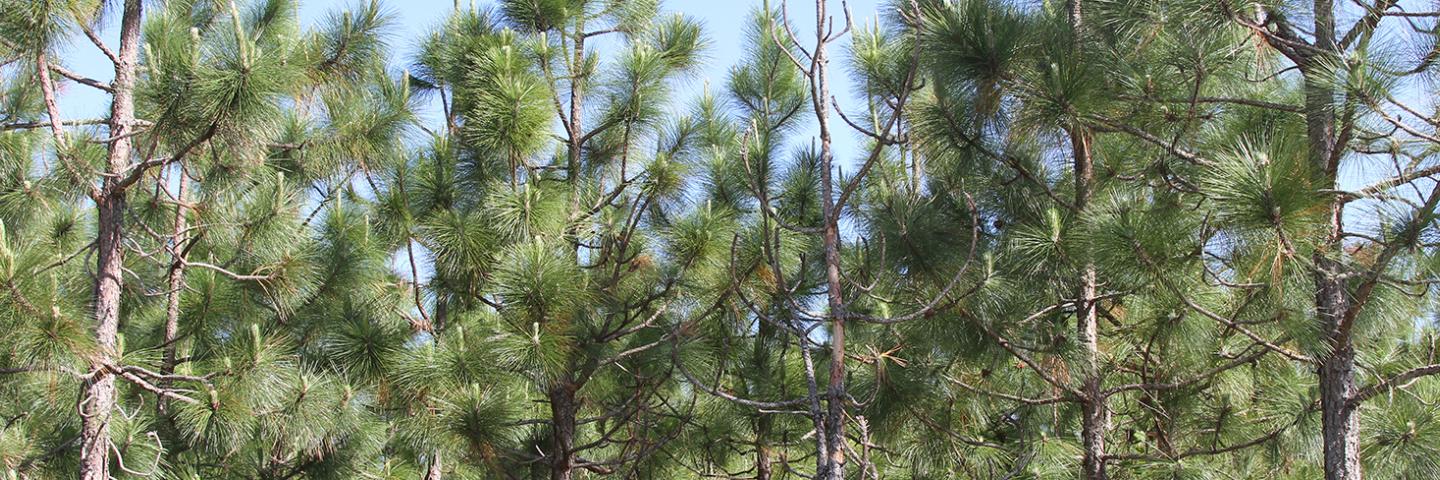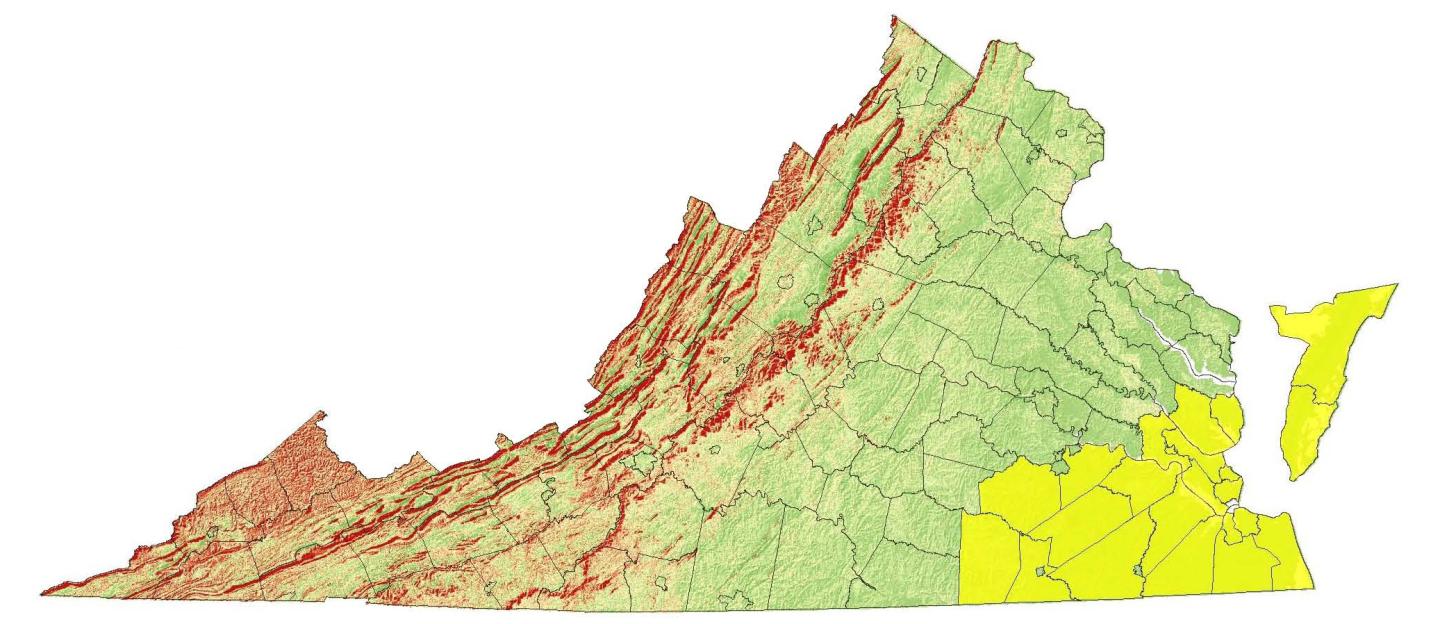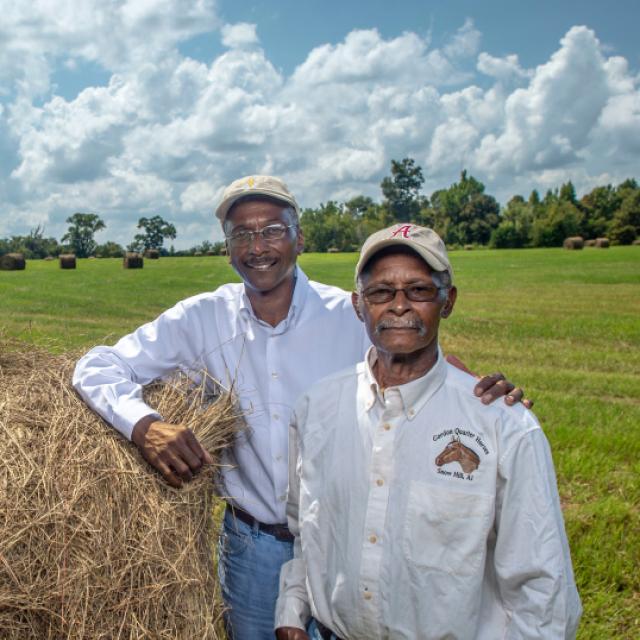Notice


Properly managed longleaf forests can help improve water quality and wildlife habitat for a complex ecosystem containing as many as 300 species of groundcover plants per acre. NRCS is partnering with conservation-minded landowners to help the slow-growing species make a comeback in its native range.
State Activities and Eligibility
Virginia is one of nine states offering funding through the Environmental Quality Incentives Program (EQIP) to help private landowners restore and manage longleaf pine. Approved participants in the cities and counties listed below (see map below) will receive financial assistance for implementing conservation practices such as site preparation, planting longleaf pine, installing firebreaks, conducting prescribed burning and controlling invasive plants.
Eligible Localities
Accomack | Brunswick | Chesapeake | Dinwiddie | Gloucester | Greensville | Hampton | Isle of Wight | James City | Mathews | Newport News | Norfolk | Northampton | Poquoson | Portsmouth | Prince George | Southampton | Suffolk | Surry | Sussex | Virginia Beach | Williamsburg | York

Conservation Practices Offered
(Check this section periodically for updates to offered practices.)
- 106 Forest Management Plan - Written
- 160 Prescribed Burning Plan - Written
- 314 Brush Management
- 315 Herbaceous Weed Control
- 324 Deep Tillage
- 327 Conservation Cover
- 338 Prescribed Burning
- 342 Critical Area Planting
- 381 Silvopasture
- 382 Fence
- 394 Firebreak
- 472 Access Control
- 490 Tree/Shrub Site Preparation
- 612 Tree/Shrub Establishment
- 643 Restoration of Rare or Declining Natural Communities
- 644 Wetland Wildlife Habitat Management
- 645 Upland Wildlife Habitat Management
- 647 Early Successional Habitat Development/Management
- 654 Road/Trail Landing Closure and Treatment
- 666 Forest Stand Improvement
Ranking Periods
NRCs will review applications received and screen and rank those determined to be eligible in order of priority. Applications from ineligible participants will not move forward until eligibility has been verified.
Applications assigned a low priority, based on the EQIP general screening worksheet, will not be ranked or considered for funding until all eligible applications with a higher priority that address an eligible resource concern have moved through the ranking process. Contact your local service center for further guidelines and program details.
State Contact:
Marian Jordan, Assistant State Conservationist for Programs
PH: 804-287-1642 | Email: marian.jordan@usda.gov
Ready to get started?
Contact your local service center to start your application.
How to Get Assistance
Do you farm or ranch and want to make improvements to the land that you own or lease?
Natural Resources Conservation Service offers technical and financial assistance to help farmers, ranchers and forest landowners.

To get started with NRCS, we recommend you stop by your local NRCS field office. We’ll discuss your vision for your land.
NRCS provides landowners with free technical assistance, or advice, for their land. Common technical assistance includes: resource assessment, practice design and resource monitoring. Your conservation planner will help you determine if financial assistance is right for you.
We’ll walk you through the application process. To get started on applying for financial assistance, we’ll work with you:
- To fill out an AD 1026, which ensures a conservation plan is in place before lands with highly erodible soils are farmed. It also ensures that identified wetland areas are protected.
- To meet other eligibility certifications.
Once complete, we’ll work with you on the application, or CPA 1200.
Applications for most programs are accepted on a continuous basis, but they’re considered for funding in different ranking periods. Be sure to ask your local NRCS district conservationist about the deadline for the ranking period to ensure you turn in your application in time.
As part of the application process, we’ll check to see if you are eligible. To do this, you’ll need to bring:
- An official tax ID (Social Security number or an employer ID)
- A property deed or lease agreement to show you have control of the property; and
- A farm number.
If you don’t have a farm number, you can get one from USDA’s Farm Service Agency. Typically, the local FSA office is located in the same building as the local NRCS office. You only need a farm number if you’re interested in financial assistance.
NRCS will take a look at the applications and rank them according to local resource concerns, the amount of conservation benefits the work will provide and the needs of applicants. View Application Ranking Dates by State.
If you’re selected, you can choose whether to sign the contract for the work to be done.
Once you sign the contract, you’ll be provided standards and specifications for completing the practice or practices, and then you will have a specified amount of time to implement. Once the work is implemented and inspected, you’ll be paid the rate of compensation for the work if it meets NRCS standards and specifications.

